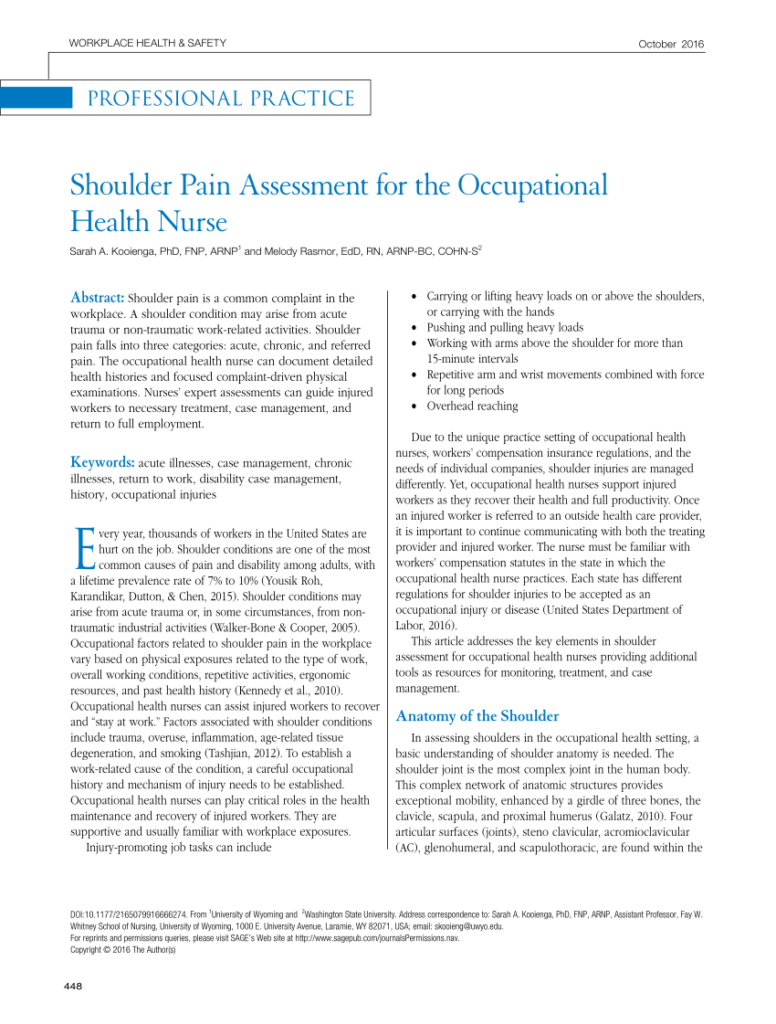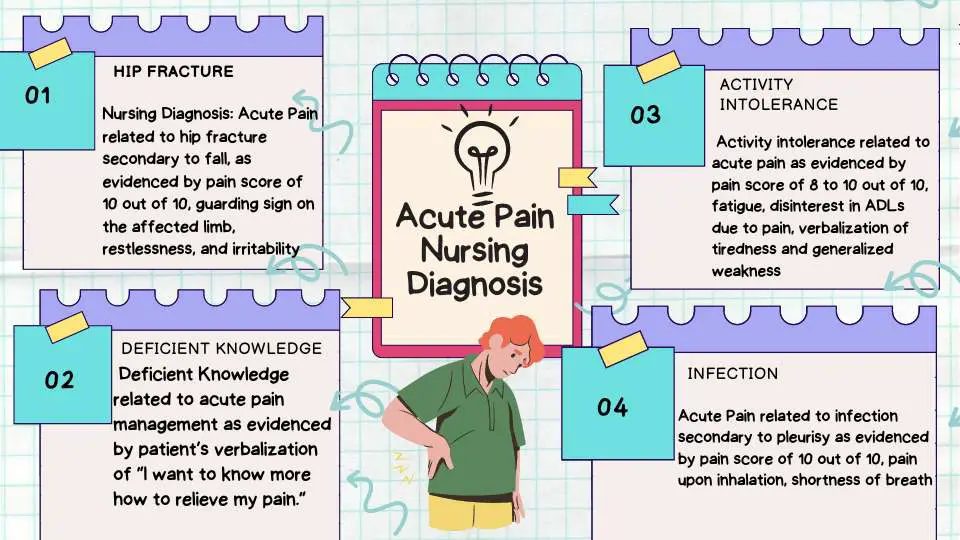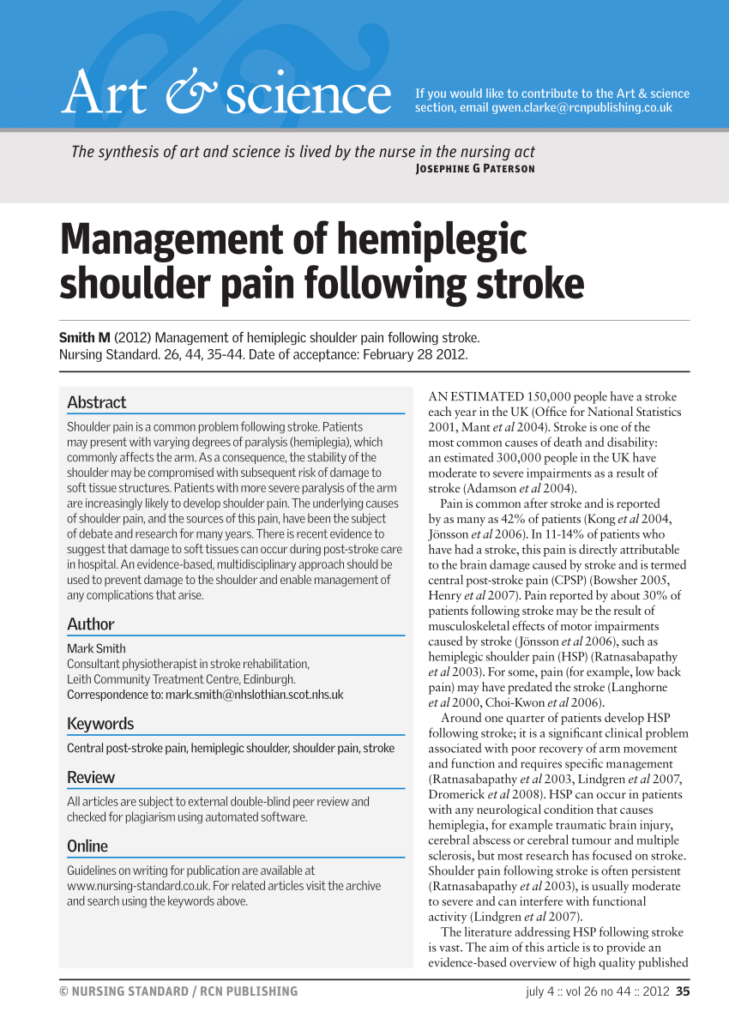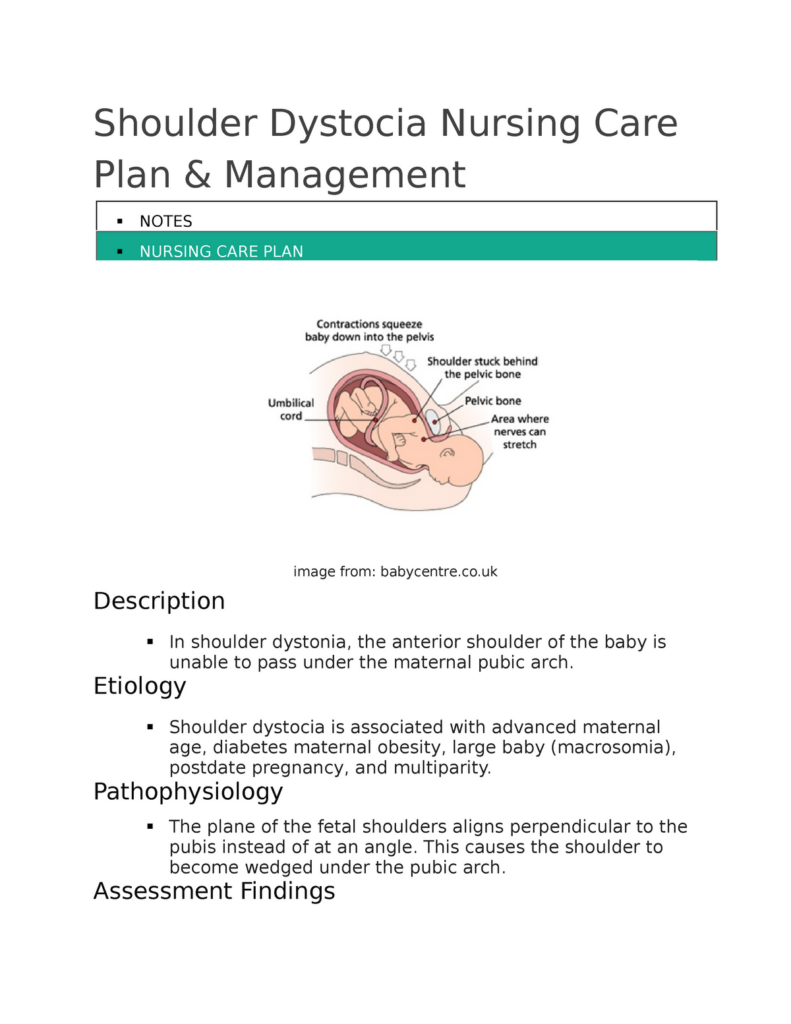Hey there! If you’re a nurse or nursing student, listen up because we’ve got some important information for you. In this article, we’re going to cover some essential nursing considerations and management strategies for dealing with shoulder pain. From assessing the patient’s pain level to implementing effective interventions, we’ll walk you through the key steps that will help you provide the best possible care for your patients experiencing shoulder pain. So, let’s get started and make sure you’re well-equipped to tackle this common issue head-on!

Overview of Shoulder Pain
Definition of Shoulder Pain
Shoulder pain refers to any discomfort or pain experienced in and around the shoulder joint, which is where the upper arm bone connects to the shoulder blade. It can range from mild to severe, and may be acute (short-term) or chronic (long-term). Shoulder pain can significantly impact a person’s ability to perform daily activities and can be caused by various factors.
Common Causes of Shoulder Pain
Shoulder pain can be caused by several factors, including:
-
Injury: Traumatic injuries, such as fractures, dislocations, and sprains, can result in shoulder pain.
-
Overuse: Overuse of the shoulder joint due to repetitive motions, such as throwing a ball or lifting heavy objects, can lead to shoulder pain.
-
Arthritis: Different forms of arthritis, including osteoarthritis and rheumatoid arthritis, can cause inflammation and pain in the shoulder joint.
-
Rotator cuff disorders: Damage or irritation to the rotator cuff, which is a group of tendons and muscles that stabilize the shoulder joint, can result in shoulder pain.
-
Bursitis: Inflammation of the bursae, small fluid-filled sacs that provide cushioning in the shoulder joint, can cause pain and discomfort.
-
Frozen shoulder: Also known as adhesive capsulitis, this condition causes stiffness and limited range of motion in the shoulder joint, leading to pain and discomfort.
Prevalence of Shoulder Pain
Shoulder pain is a common complaint among individuals of all ages. According to research, it is estimated that approximately 18-26% of adults experience shoulder pain at some point in their lives. The prevalence of shoulder pain increases with age, with higher rates observed in individuals over the age of 60. Shoulder pain can affect both males and females, although certain causes, such as rotator cuff tears, may be more common in specific populations.
Impact of Shoulder Pain on Quality of Life
Shoulder pain can significantly impact an individual’s quality of life. The pain and discomfort can limit their ability to perform daily activities, such as getting dressed, reaching overhead, or carrying objects. It can also affect sleep patterns and lead to decreased productivity at work or school. In addition to the physical limitations, shoulder pain can also have psychological effects, such as increased stress, anxiety, and depression. Therefore, effective management of shoulder pain is crucial to improving the overall well-being and quality of life for individuals experiencing this condition.
Assessment of Shoulder Pain
Patient History
When assessing shoulder pain, obtaining a thorough patient history is essential. The nurse should inquire about the onset and duration of the pain, any triggering factors, and the nature and intensity of the pain. Additionally, questions about any previous injuries or surgeries involving the shoulder, as well as any concurrent medical conditions or medications, should be asked. Understanding the patient’s occupation, hobbies, and physical activities is also important, as these factors can provide valuable insights into the potential causes of the shoulder pain.
Physical Examination
A physical examination plays a critical role in assessing shoulder pain. The nurse should visually inspect the shoulder area for any visible deformities, swelling, or discoloration. They should also palpate the shoulder joint to identify any tender areas or abnormal sensations. Assessing the range of motion of the shoulder joint is crucial in determining any limitations or abnormalities. Special tests, such as the Neer’s test or Hawkins-Kennedy test, may be performed to assess specific structures within the shoulder joint and identify potential injuries or conditions.
Diagnostic Tests
In some cases, diagnostic tests may be necessary to further evaluate shoulder pain. These can include:
-
X-rays: X-ray imaging can reveal fractures, dislocations, or degenerative changes in the shoulder joint.
-
Magnetic Resonance Imaging (MRI): An MRI provides detailed images of the shoulder joint, allowing for the evaluation of soft tissues, such as tendons, ligaments, and muscles.
-
Ultrasound: Ultrasound imaging can be used to assess the integrity of tendons and identify any abnormalities or inflammation.
-
Computed Tomography (CT) scan: CT scans may be utilized to obtain detailed images of the bony structures of the shoulder joint, providing information about fractures or other abnormalities.
These diagnostic tests can help healthcare providers identify the underlying cause of shoulder pain and develop an appropriate treatment plan.

Pharmacological Management of Shoulder Pain
Nonsteroidal Anti-inflammatory Drugs (NSAIDs)
Nonsteroidal anti-inflammatory drugs (NSAIDs) are commonly used in the management of shoulder pain due to their analgesic and anti-inflammatory properties. Examples include ibuprofen, naproxen, and aspirin. NSAIDs help relieve pain and reduce inflammation, allowing individuals to experience greater comfort and improved shoulder mobility. However, it is essential to consider potential side effects, such as gastrointestinal disturbances and renal complications, when administering NSAIDs.
Analgesics
Analgesics, or pain relievers, may be prescribed to help manage shoulder pain. These medications work by blocking pain signals to the brain, providing temporary relief. Common analgesics include acetaminophen (Tylenol) and opioids, such as codeine or oxycodone. Opioids are typically reserved for moderate to severe pain and should be used with caution due to the risk of dependence and side effects, including sedation and respiratory depression.
Muscle Relaxants
Muscle relaxants may be prescribed for individuals experiencing shoulder pain associated with muscle tension or spasm. These medications work by reducing muscle contractions and promoting relaxation. Examples of muscle relaxants include cyclobenzaprine and baclofen. It is important to educate patients about the potential side effects of muscle relaxants, such as drowsiness and dizziness, and to follow the prescribed dosage and duration.
Corticosteroid Injections
Corticosteroid injections may be utilized in cases of severe shoulder pain that is unresponsive to conservative treatments. These injections deliver a potent anti-inflammatory medication directly into the shoulder joint, providing rapid relief. Corticosteroid injections can help reduce pain and inflammation associated with conditions such as bursitis, tendinitis, and rotator cuff disorders. However, they are generally reserved for short-term use due to potential side effects, such as tissue damage and decreased immunity.
Non-pharmacological Management of Shoulder Pain
Physical Therapy
Physical therapy plays a crucial role in the non-pharmacological management of shoulder pain. A physical therapist can assess the individual’s specific needs and develop a personalized treatment plan. Physical therapy may include exercises to improve strength, flexibility, and range of motion in the shoulder joint. Additionally, modalities such as heat and cold therapy, ultrasound, or electrical stimulation may be employed to alleviate pain and promote healing.
Exercise and Stretching
Specific exercises and stretching techniques targeted at the shoulder joint can help alleviate pain and improve mobility. Strengthening exercises for the muscles surrounding the shoulder, such as the rotator cuff muscles, can provide stability and support to the joint. Stretching exercises can help improve flexibility and reduce stiffness in the shoulder, allowing for increased range of motion.
Electrotherapy
Electrotherapy, including techniques such as transcutaneous electrical nerve stimulation (TENS) and pulsed electromagnetic field therapy (PEMF), may be utilized to manage shoulder pain. These modalities work by delivering electrical impulses or magnetic fields to the affected area, which can help block pain signals, reduce inflammation, and promote tissue healing.
Heat and Cold Therapy
Heat and cold therapy are commonly used to alleviate shoulder pain. Applying heat, such as through hot packs or warm showers, can help relax muscles, improve blood flow, and alleviate stiffness. Cold therapy, using ice packs or cold compresses, can reduce inflammation, numb pain, and minimize swelling. It is important to follow recommended time limits and precautions when using heat and cold therapy to avoid burns or frostbite.
Acupuncture
Acupuncture involves the insertion of thin needles into specific points on the body to alleviate pain and promote healing. It is considered a safe and effective treatment option for shoulder pain by stimulating the release of endorphins and modulating pain signals. Acupuncture should be performed by a qualified practitioner trained in traditional Chinese medicine.
Transcutaneous Electrical Nerve Stimulation (TENS)
Transcutaneous electrical nerve stimulation (TENS) is a non-invasive technique that uses a small device to deliver low-level electrical currents to the skin. TENS can help reduce pain by interfering with pain signals, promoting the release of endorphins, and stimulating nerve fibers. It can be an effective adjunct therapy for managing shoulder pain.

Potential Complications and Nursing Interventions
Frozen Shoulder
Frozen shoulder, also known as adhesive capsulitis, is a condition characterized by significant stiffness and limited range of motion in the shoulder joint. Nurses play a vital role in providing education to patients with frozen shoulder, explaining the expected course of the condition, and providing guidance on exercises and stretches to improve joint mobility. Collaboration with physical therapists can help develop effective treatment plans for frozen shoulder.
Adhesive Capsulitis
Adhesive capsulitis, or frozen shoulder, can lead to considerable pain and functional limitations. Nursing interventions for adhesive capsulitis include encouraging adherence to physical therapy exercises, administering pain medication as prescribed, and providing emotional support to patients who may feel frustrated or anxious due to the restricted mobility.
Rotator Cuff Tear
A rotator cuff tear occurs when one or more of the tendons in the rotator cuff are torn. Nursing interventions for rotator cuff tears may involve assisting with activities of daily living, providing education on proper shoulder positioning and movements, and promoting compliance with prescribed treatments, such as physical therapy or surgery.
Impingement Syndrome
Impingement syndrome occurs when the tendons of the rotator cuff or the bursae in the shoulder joint become compressed, resulting in inflammation and pain. Nursing interventions for impingement syndrome include teaching patients about modifying activities to avoid exacerbating symptoms, applying ice or heat therapy as prescribed, and facilitating communication with the healthcare team for further evaluation and treatment.
Nursing Interventions for Complications
Nurses play a crucial role in the management of shoulder pain complications. They can provide education, emotional support, and monitor patients for any adverse events or complications related to their condition or treatment. Collaborating with the healthcare team to ensure optimal interdisciplinary care is essential in addressing the diverse needs of individuals with shoulder pain complications.
Patient Education and Self-Management Strategies
Educating Patients on Shoulder Anatomy
Providing patients with a basic understanding of shoulder anatomy can help them comprehend the nature of their pain and the importance of various treatment strategies. Nurses can use visual aids, diagrams, or models to explain the structures of the shoulder joint, such as the bones, tendons, ligaments, and muscles involved.
Teaching Proper Body Mechanics and Posture
Correct body mechanics and posture are crucial in preventing and managing shoulder pain. Nurses can educate patients on proper lifting techniques, ergonomics at workstations, and maintaining good posture while sitting or standing. Emphasizing the importance of avoiding repetitive or excessive shoulder movements can help prevent future injuries.
Advising on Lifestyle Modifications
Lifestyle modifications can play a significant role in managing shoulder pain. Nurses can advise patients to maintain a healthy weight to reduce stress on the shoulder joint, engage in regular physical activity to strengthen shoulder muscles, and avoid activities or sports that may put excessive strain on the shoulders. Educating patients about strategies to avoid or modify activities that exacerbate their pain can also be beneficial.
Encouraging Compliance with Treatment Plan
Supporting patients in adhering to their prescribed treatment plan is crucial for optimal outcomes. Nurses can provide education on the importance of following medication schedules, attending physical therapy sessions, and engaging in home exercise programs. Emphasizing the potential benefits of treatment and addressing any concerns or barriers can help motivate patients to actively participate in their care.

Palliative Care for Shoulder Pain
Pain Control and Management
Pain control and management are essential aspects of palliative care for individuals with shoulder pain. Nurses can collaborate with the healthcare team to develop a comprehensive pain management plan, which may include pharmacological interventions, such as analgesics and adjuvant medications, as well as non-pharmacological techniques, such as heat or cold therapy, relaxation techniques, and distraction techniques. Regular pain assessments and adjusting the treatment plan as needed are crucial to ensure optimal pain control.
Emotional Support and Counseling
Shoulder pain can have a significant impact on an individual’s emotional well-being. Nurses can provide emotional support and counseling to address any psychological distress associated with shoulder pain. This may involve active listening, providing empathy, and referring patients to mental health professionals or support groups as needed.
Enhancing Comfort through Positioning and Mobility Aids
Facilitating comfort through proper positioning and the use of mobility aids is another key aspect of palliative care for shoulder pain. Nurses can provide education on optimal positions and supportive devices, such as pillows, slings, or orthoses, to relieve pain and enhance functional mobility. Collaborating with occupational therapists can help identify appropriate assistive devices to facilitate daily activities.
Collaborative Care and Interdisciplinary Approach
Team Approach to Managing Shoulder Pain
Managing shoulder pain effectively often requires a multidisciplinary team approach. Nurses, physical therapists, orthopedic surgeons, pain specialists, and other healthcare professionals collaborate to develop comprehensive treatment plans based on the individual needs and preferences of the patient. Effective communication and coordination among team members are crucial for optimal outcomes.
Collaboration with Physical Therapists, Orthopedic Surgeons, and Pain Specialists
Nurses play a pivotal role in facilitating collaboration between patients and other healthcare professionals involved in managing shoulder pain. They can ensure that patients receive appropriate referrals to physical therapists, orthopedic surgeons, and pain specialists as needed. Promoting effective communication and coordination between these professionals helps ensure a holistic and patient-centered approach to shoulder pain management.

Cultural Considerations in Shoulder Pain Management
Understanding Cultural Beliefs and Practices
Cultural beliefs and practices can significantly influence an individual’s perception and management of shoulder pain. Nurses should approach shoulder pain management with cultural sensitivity, respecting and acknowledging the patient’s cultural background. This includes understanding any traditional remedies or healing practices that the patient may rely on and integrating them into the overall care plan when appropriate.
Adapting Nursing Interventions
Adapting nursing interventions to align with cultural preferences and beliefs is essential in providing culturally competent care for patients with shoulder pain. This may involve using interpreters or translators to facilitate effective communication, incorporating traditional therapies or rituals into the treatment plan, and considering cultural factors that may influence pain expression and coping mechanisms.
Ethical Issues in Shoulder Pain Management
Pain Assessment and Management Principles
Ethical considerations are vital in shoulder pain management, particularly in ensuring the appropriate assessment and management of pain. Nurses should be knowledgeable about pain assessment tools and principles to ensure accurate and timely pain management. Applying the principles of autonomy, beneficence, and non-maleficence in pain management helps promote patient-centered care and respect for individual preferences and values.
Respect for Patient Autonomy
Respecting patient autonomy is a fundamental ethical principle when managing shoulder pain. Nurses should involve patients in decision-making processes, provide them with information about available treatment options, and respect their choices and preferences. Ensuring informed consent for procedures or interventions is essential to uphold the autonomy of patients.
Promoting Equitable Access to Care
Ethical considerations in shoulder pain management also extend to promoting equitable access to care. Nurses should advocate for patients who may face barriers to healthcare, such as financial constraints or limited access to healthcare facilities. Promoting equitable access to pain management services and resources helps ensure that all individuals with shoulder pain receive the care they need, regardless of social or economic factors.